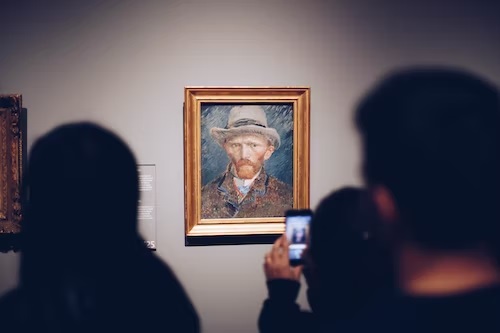Blog

“Activists Splatter Van Gogh Painting, Bringing the Issue of Museum Art Security to the Forefront”
Earlier this month, two climate activists poured tomato soup on the Vincent Van Gogh “Sunflowers” painting at the National Gallery in London. They then superglued themselves beneath the frame.
Apparently, the protestors had done their research and chose a painting that was glazed — covered by thin glass — so the soup would not damage it. The act was more symbolic of their opposition to the country initiating new oil and gas projects rather than a malicious act to harm the painting. And due to the glazing, the painting was not damaged (though the frame was).
Since then, stunts such as these have proliferated internationally by other climate activists, with polarizing results.
As “thoughtful” as these protestors were, their act has driven the question of art security to the forefront. Can priceless paintings and artwork in museums be adequately protected against protestors or those with ill will?
The Challenges of Securing Museum Art
Museum security is unlike many other types of security in that the items that need protection are displayed in front of everyone, and therefore vulnerable. Whereas banks keep their fortunes locked away, the whole point of a museum is to showcase its artwork, which can be worth millions of dollars, or simply priceless.
There are several aspects of museum security: theft prevention, guards, protocols, and art maintenance. Here we will look at each one.
- Theft Prevention
Since museums leave their fortunes on display for all to see, they must turn to technology to help protect them from thieves or those who would harm them.
We have come a long way from paintings cordoned off by ropes (though they still exist). Today, there are vibration sensors, motion detectors, video and remote monitoring, trackers, and in general, a whole slew of IoT (internet of things) devices museums use to keep artwork safe from thieves, from viewers who get too close, and from those who would intentionally harm a piece of art.
2. Security Guards
Museum guards must undergo background checks and frequent training – background checks because several art thefts have been “inside jobs” and training because there is always a new threat to look out for.
Another issue that challenges museum security guards is the job itself. It’s boring. Unlike personal security guards who are always moving and have constant stimulation, museum security guards are under-stimulated. They see the art day in and day out. People come and go, talking quietly. Not much action.
Due to this reality, it is up to museum leaders to find ways to engage their security guards. Frequent rotations, contests, and rewards are several means.
3. Museum Protocols
Films like Red Notice and The Thomas Crown Affair have protagonists who jump through incredible technological hoops to steal desired works of art. In real life, many heists are much more low-tech and can be prevented by simple protocols.
For example, the Mona Lisa theft of 1911 was perpetrated by a former museum employee who entered the museum, removed the painting from its pegs, covered it, and walked out the door.
Museum protocols such as passcodes, ensuring that all visitors have left after closing time, and performing security checks on visitors can prevent this.
There is a further fear that in the face of this new mode of attack, museums may react by making the art more inaccessible and distanced from visitors.
4. Art Maintenance
Museum security must not only worry about people, but also about the laws of chemistry and nature. Many old paintings were made with materials that have deteriorated over time. Moreover, certain paints react to different lighting, smoke, or even human breath.
Art experts must find ways to restore or maintain the integrity of these paintings to the best of their abilities. Glazing is certainly one way. Keeping people at a safe distance is another (hence good old-fashioned ropes.) Each piece of art is different, so experts must be employed for ongoing upkeep.
Art Will Always Need Protection
Museum security tools have made it easier to prevent art theft and damage than in the past. However, there will always be those who have a mind to harm or steal. Following the London incident, activists threw mashed potatoes at a Claude Monet painting in Germany and cake at the King Charles III model at Madame Tussauds.
While these have been climate activists from the same organization, every year brings a new trend and new causes. The potential for copycats among a slew of causes is high. As with all security, there will always be a need for museum art security to evolve with the new challenges that arise.

